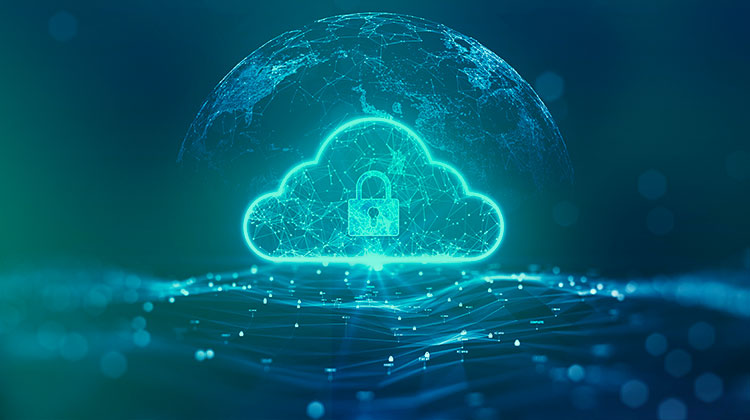Understanding SaaS Security: Best Practices and Threats to Consider

As Software as a Service (SaaS) continues to grow in popularity, SaaS security is becoming more challenging to maintain. New threats and forms of attack seem to emerge monthly, forcing businesses to stay vigilant.
Securing your SaaS applications requires adopting a set of best practices to guard sensitive data in the cloud, including your customers’ personal information and your sensitive business information.
This article explores those best practices and breaks down the potential threats your organization must guard against.
SaaS Security Best Practices
The following best practices can help keep your SaaS application secure.
Data Encryption
Employ robust encryption protocols to safeguard data both in transit and at rest. “In transit” encryption secures data as it travels across networks, preventing it from being intercepted by unauthorized entities. “At rest” encryption protects data stored on hard drives, servers, or databases.
These encryption methods ensure that the data remains indecipherable even if unauthorized access occurs. It’s not just a good idea; it’s the law: many governments require encryption for sensitive data such as healthcare, financial, and personally identifiable information (PII).
Identity and Access Management
Implement strict identity and access management policies to determine who can go into what parts of your SaaS applications. Role-based access controls (RBAC) authenticate and authorize users based on their roles and responsibilities, limiting access to only what is necessary for their job functions. This helps mitigate insider threats.
Implementing multi-factor authentication (MFA) is another way to strengthen user authentication. It adds an extra layer of security, requiring users to verify their identity through multiple means, such as passwords, biometrics, or one-time codes.
Access management also extends to the cloud providers that support your SaaS applications. Not all providers offer the same authentication options. Some allow you to integrate with a customer-managed identity provider, such as Open Authorization or OpenID Connect. Others support MFA.
Look for providers that also support Active Directory Single Sign-On (AD SSO). It guarantees that the provider’s account and password policies align with your SaaS application usage.
Regular Security Audits and Backups
Conduct frequent security audits to identify vulnerabilities and ensure compliance with industry standards. Regular assessments help proactively address potential risks before malicious actors can exploit them.
Similarly, regularly backing up your critical data and establishing effective recovery procedures can save you in the event of a security breach or data loss. Having up-to-date backups ensures minimal disruption and data recovery capabilities.
Employee Training and Awareness
Not all insider threats are malicious; some come from employees falling for scams. Educate employees on security best practices and raise awareness about potential dangers like phishing attacks. Human error is a common entry point for security breaches, making ongoing training crucial. As those 90s PSAs used to say, the more you know…
SaaS Security Threats
Speaking of “the more you know,” being aware of the kinds of attacks that might come your way can help strengthen your defenses when building a SaaS product. Here are some common SaaS security risks.
Misconfiguration
The Open Web Application Security Project (OWASP) identifies incorrectly configured security measures as the most common threat. Make sure your SaaS application is configured correctly and upgrade all tools used in the cloud environment in a timely manner. Ensure that APIs are secure and follow best practices to prevent vulnerabilities that attackers could exploit.
Cross-site Scripting
Malicious actors often use XSS attacks that inject malicious code into web pages end-users view. It affects most applications and is the most prevalent security issue after misconfiguration. Make sure you use the latest versions of React JS or Ruby on Rails, which automatically block XSS.
Phishing Attacks
Phishing remains a prevalent threat, with attackers using deceptive emails to trick users into revealing sensitive information. Educate employees and your product’s users to recognize phishing attempts via email, SMS texts, direct messages, and so on. Criminals exploit the latest communication apps in their attempts to phish private data.
Data Breaches
Phishing is one method attackers use to gain unauthorized access to sensitive data, but there are many others. Regardless of the method used, data breaches can have severe consequences, including steep fines, loss of user trust, and the permanent deletion or corruption of your vital business data. Implement strict access controls, use strong encryption, and monitor user activities to promptly detect and respond to unusual behavior.
Insider Threats
Malicious or unintentional actions by employees can pose a significant threat. Regularly review and update access privileges, monitor user activities, and implement behavioral analytics to detect unusual patterns.
If your SaaS product uses online payment methods, it may create a risk of identity theft. To protect user information like credit card and banking data, a combination of security measures, including Lightweight Directory Access Protocol (LDAP), firewalls, and data encryption in transit and at rest.
DDoS Attacks
Distributed Denial of Service (DDoS) attacks can disrupt SaaS availability and lead to service outages. Implement DDoS mitigation measures, such as traffic filtering and load balancing, to ensure service continuity.
Compliance
Depending on your industry, you’ll need to comply with specific security and auditing practices. While this in itself isn’t a “threat” (and, in fact, is meant to ensure you are protected from threats), failure to comply can result in stiff legal or financial penalties.
For example, HIPAA and SOX are mandates you should be aware of if you’re in healthcare. Broader regulations include GDPR and PCI-DSS.
These laws describe the minimum measures you need to put in place to protect user data in the cloud, including auditing and security testing. The agencies and organizations behind these rules mandate monitoring your SaaS applications and providing meticulous logs and audit trails.
SaaS Security Isn’t Optional
As the world increasingly relies on SaaS solutions, security must be a top priority.
By adopting the SaaS security best practices and remaining vigilant against emerging threats, you can fortify your SaaS environment, protecting both your data and the trust of your customers and stakeholders.
Remember, the key to building a SaaS product that’s hardened against criminals isn’t just adopting preventive measures. You must also take a proactive and adaptive stance against evolving threats.

